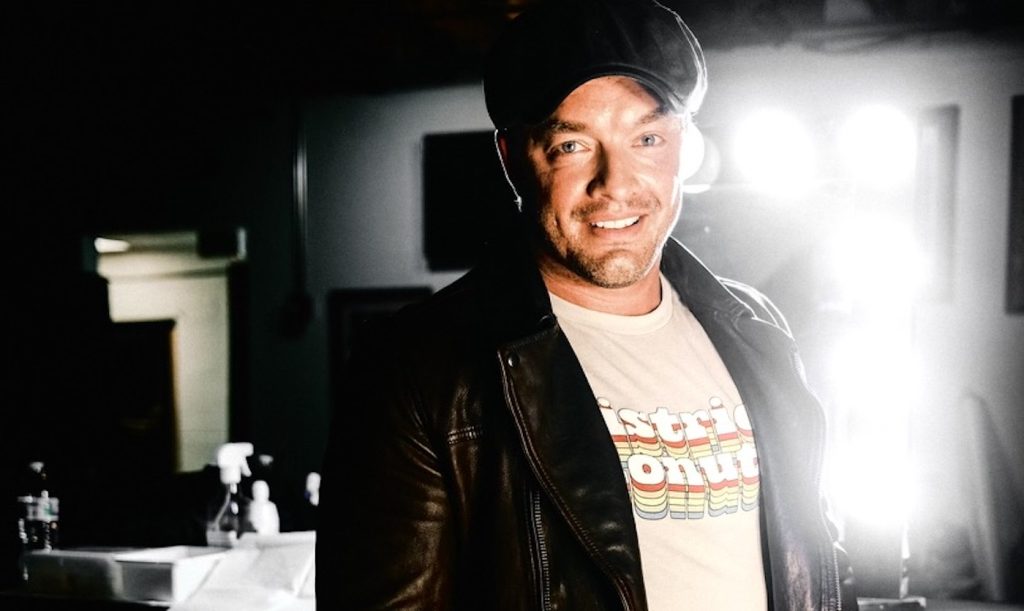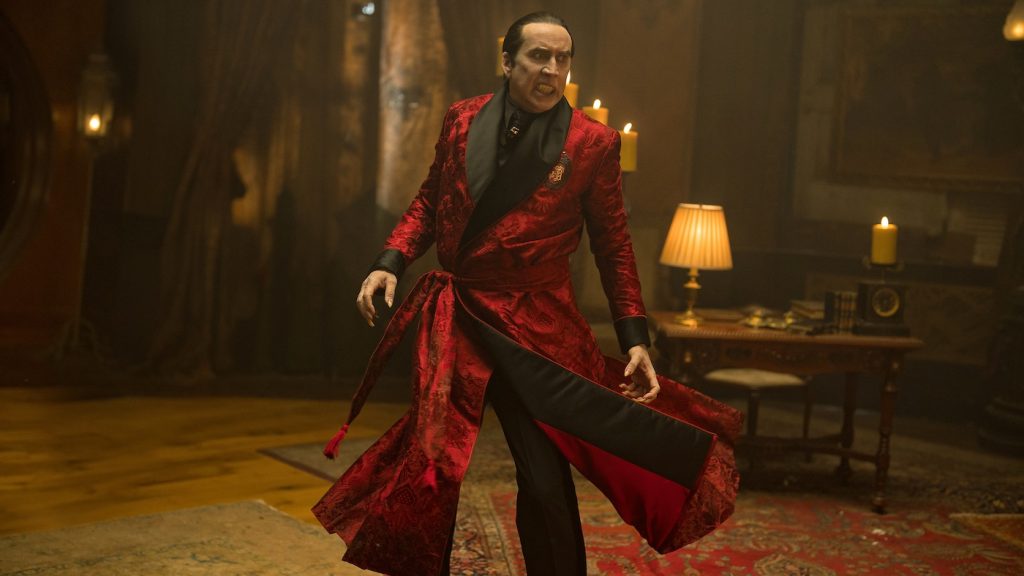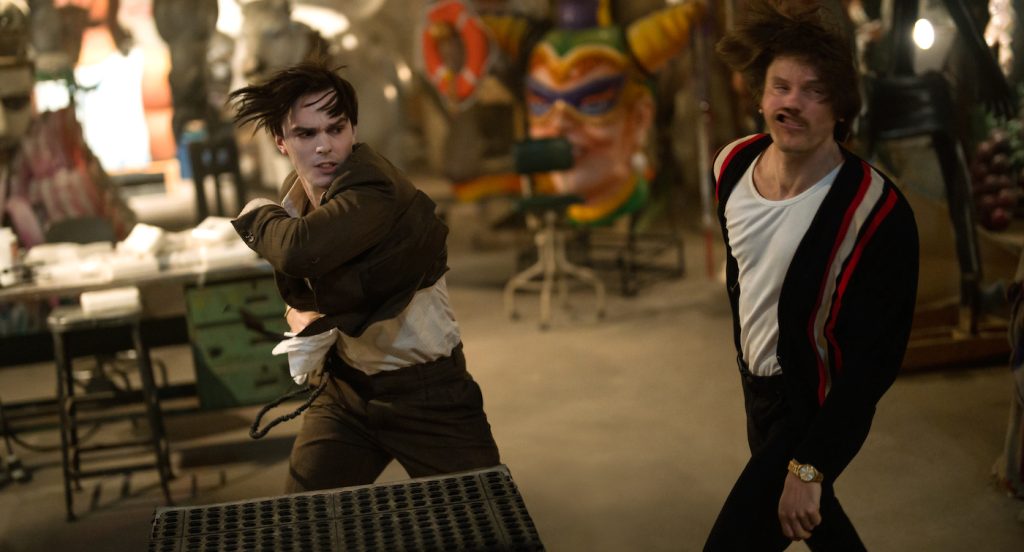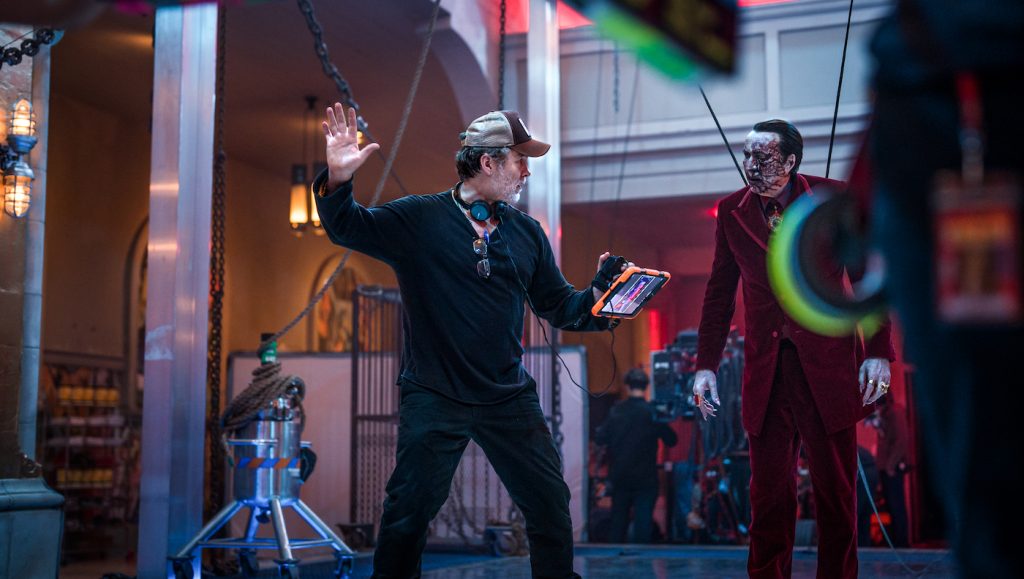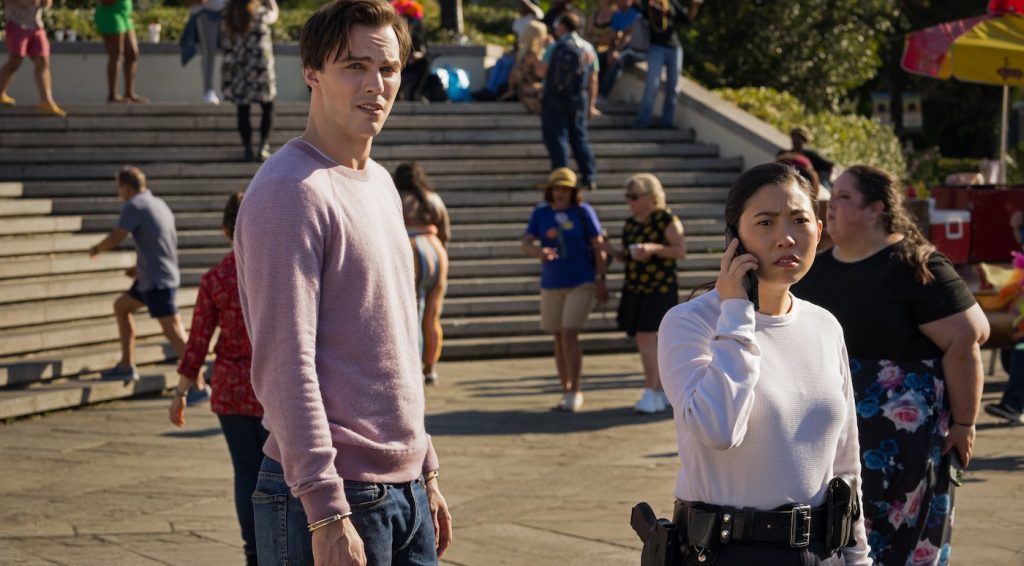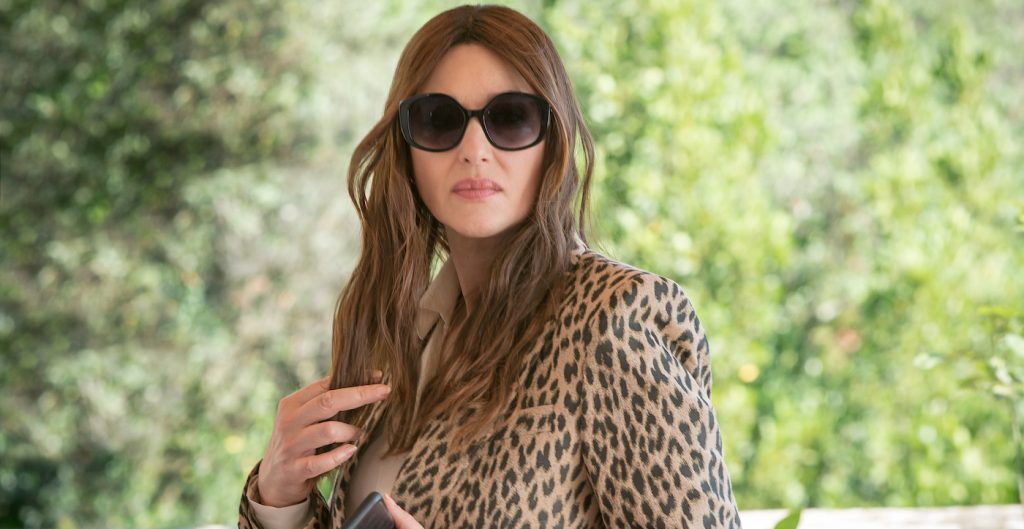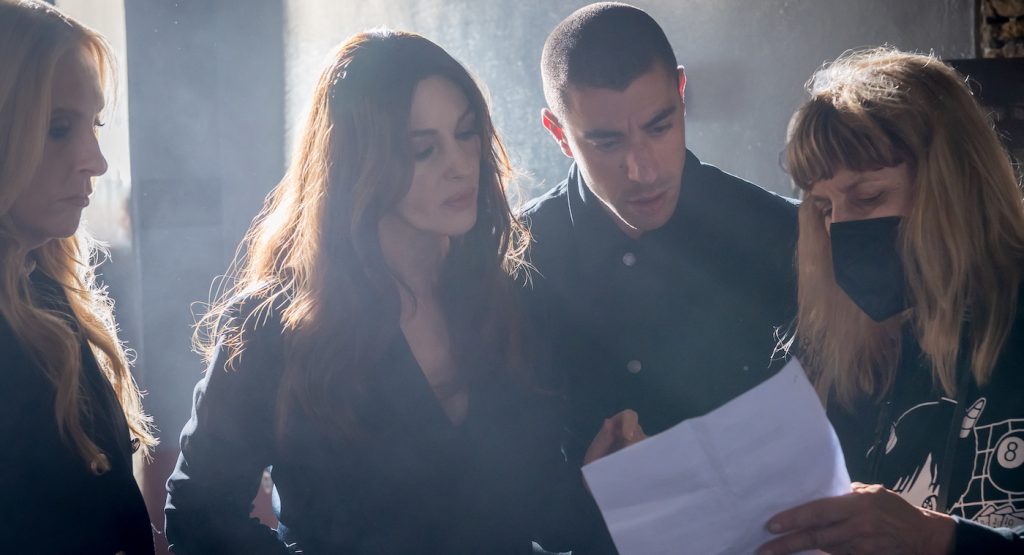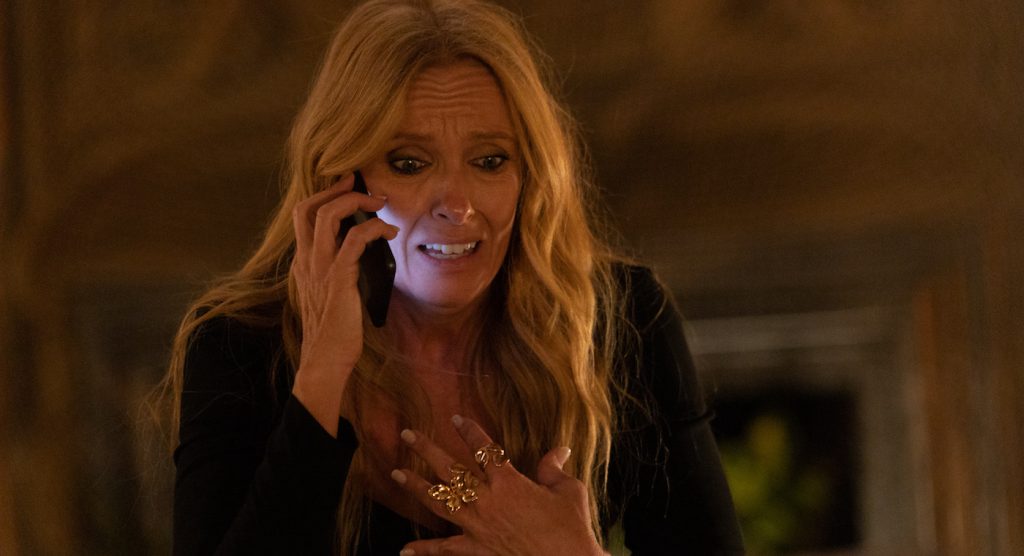Ryan Doucette is the manager of transportation compliance for Warner Bros. Studio Operations, Canada, and while that title might not immediately bring to mind a job at the forefront of the studio’s efforts at creating ever more sustainable productions, that’s precisely where Doucette finds himself.
“This is probably not as exciting as talking to a cinematographer,” Doucette joked when we spoke, “but it’s really important, and it’s not something we have a choice about.”
Doucette was part of the team that helped Warner Bros. Television’s popular series Kung Fu implement renewable diesel into the production of season three in an effort to make positive impacts on the series’ carbon footprint. More productions at Warner Bros. are gearing up to follow Kung Fu‘s lead, with both the economics making increasing sense and the moral and ethical responsibilities becoming ever more apparent.
We spoke to Doucette about his role, how he sees the future of more sustainable TV creation taking shape, and how a TV or film production will likely look very different in just a few short years.
Let’s start with a basic but crucial question: what is renewable diesel, and how is it different from biodiesel?
That’s one of the biggest misconceptions out there—that they’re the same—and there’s a misunderstanding around diesel fuel options. One hundred hydro-treated renewable diesel is not biodiesel. While biodiesel is made from animal and seed fats, it’s got a completely different chemical structure from renewable diesel. The main thing about renewable diesel is it’s a drop-in fuel, meaning that it can be put into any diesel engine, whereas biodiesel can gel in cold temperatures, plug up some of the filters, and has some implications for the manufacturer’s warranties on trucks, so it’s a case-by-case use. Renewable is not that; it’s just a pure, straight, chemically similar compound that you can drop into any existing diesel engine. The fuel can be used year-round in temperate climates like Vancouver and provided seasonally in colder climates and has better cold-weather performance compared to biodiesel fuel blends
I imagine you have to explain this distinction a lot?
When people hear we’re using renewable diesel, they think it’s going to ruin their equipment, so we have to educate them and say that this isn’t the case with renewable diesel.
Walk us through how renewable diesel is being used on sets today.
Renewable diesel is something I learned about from one of our previous transportation coordinators on Superman & Lois. It’s made from one hundred percent renewable materials, which can include everything from food waste, animal fats, and vegetable oils, and it’s produced through a refining process called hydrotreating. The process involves treating the renewable feedstock with hydrogen under high pressure and temperatures, which upgrades the renewable feedstock to a diesel-quality fuel. The final product is really high quality, low carbon intensive renewable diesel, which is comparable to the chemical composition of conventional diesel. Renewable diesel can be used undiluted in diesel equipment, such as motion picture generators and diesel trucks.
There are so many barriers to entry to try and get people to do things differently, so I imagine it’s a huge help to be able to say that you can use renewable diesel in existing vehicles.
For sure. With biodiesel, there’s also an increase in maintenance cost as you’re having to change out filters, and it can even break down some of the rubber housing in the engines. Renewable diesel is a really clean burning fuel, basically a pure diesel fuel that functions identically to fossil fuels, but you get the benefit of lower carbon emissions and environmental impacts. They say it generates 75 to 85 percent fewer greenhouse gas emissions compared to regular fossil fuels, and it’s immediate. You don’t have to do very much, so it’s an easy thing to implement to help lower the carbon footprint of a production.
Do you look at renewable diesel as a stepping stone to an even purer, cleaner fuel, or do you see it as a solution itself?
They’re setting some really aggressive targets here in Canada as well as in the United States to hit zero-emission vehicles, but that takes time, and we need to start making a difference now. We’re starting to explore more EV usage in production, and there are larger vehicles coming online we’re looking into, including fuel cell trucks, but there’s a whole range of different logistics and considerations you need to take into account to make those things work on a production, charging infrastructure being one of them.
What are the logistical challenges unique to TV sets that make electric vehicles more difficult?
We work long hours, we’re running around all the time moving equipment here, there, and everywhere, and we need to have dedicated chargers to charge those vehicles. And if the general public is also fighting for those charging stations, we have to think about that. If we’re trying to get an actor to set and all of a sudden we need a charge, where do we get that? We really want it to work, but we also need as little interruption to the actual process of filmmaking as possible, so renewable diesel is really easy to implement right now.

How widely available is renewable diesel in the Vancouver area?
I’ll start with California because it’ll give you a sense of how far behind we are. You can go to retail gas locations and get 100% renewable diesel right from the pump. In British Columbia, we’re reliant on bulk fuel suppliers and large energy companies. Yes, we have it available; sometimes, depending on the vendor, it can be a little more expensive than regular diesel, so that can be a barrier. Oftentimes, because of carbon credits offered to these energy companies, they subsidize these fuels to bring the cost down to get in line with parody for conventional diesel, which makes it a little more palatable for production managers to say yes, let’s do it. It’s a no-brainer if it’s pretty much the same cost and you’re getting all of these benefits in terms of overall carbon emissions.
Telling the story about how using renewable diesel is making a real impact on carbon emissions has to be a huge part of getting all the necessary players on board. How do you do that?
The renewable diesel vendor provided calculators to help us see the impact we were making. It was a really helpful partnership; the calculator showed the impact of renewable diesel in terms of the equivalent of cars removed from the road in a year. That was helpful in communicating with our production managers. We can use the calculator to clock past usage, and we can show them, relative to a ten-episode season, how much they’d potentially use and what they’d be offsetting relative to the conventional diesel. It’s important to drive this home and help people see why it’s worth it. But most people are already really aware we need to make a difference, and I’d say many in the motion picture industry are really taking an interest in a transition to clean fuel. Kung Fu deployed renewable diesel for their third season, and the calculator made it possible to see what they achieved and give them a pat on the back for taking that leap and making a commitment.
Can you walk me through how Kung Fu and other Warner Bros. productions use renewable diesel?
A lot of productions are focused on the important step of putting renewable diesel into diesel generators because that makes the most impact. Right now, we’re running our diesel generators to power the lights on our sets and various equipment. For our trucks, yes, it’s a good opportunity to put this fuel into them, but in our industry, we drive and we stop; we’re not long-haul truckers. But our generators are running all day long. So Kung Fu made the decision to put renewable diesel into the generators and made the most impact. We have another show called Dead Boy Detectives that’s shooting in BC and Riverdale season 7, and both are taking advantage of renewable diesel. We hope any future production will take the opportunity to use it, and I think it’ll be an easy sell.
What are the economics of using renewable diesel versus the dirty stuff?
Much easier as it becomes more available and comes down in price compared to conventional diesel. Conventional diesel could skyrocket because of certain elements in the marketplace, and suddenly renewable diesel is 15 cents a liter cheaper, and then it’s even more attractive. But the hope is that it becomes pretty much on par so productions will use it.
How does using renewable diesel affect the communities where these productions are being shot?
We’re driving along your streets and parking and shooting in locations around your community, so we’re a part of the community. It makes a big difference when there’s a generator on the side of the road, and someone is out walking their dog and sees that it’s using renewable diesel. There’s this effect that can happen where you see a generator humming along and lighting up a street and all the production’s lights and the hair and makeup trailers and the cast’s trailers, and it’s doing all that with renewable diesel. That really does have an impact on the community. We’ll continue to look at different options, such as hydrogen fuel cells. We’re looking into sustainable alternatives with batteries, water, and electricity—there are lots of implications on how we can roll that out, but it’s happening. We’re also exploring battery energy storage solutions, which are basically big batteries that can power and light the set and help charge our electric vehicles when needed.
The future of the TV and movie set sounds appropriately sci-fi.
The typical TV set will start to look a little different in the next few years, and communities are going to see that—particularly solar options, with trailers that are completely sufficient on solar and battery. In BC, we have the Reel Green Clean Energy Committee, I sit on that, and Ontario Green Screen, which is focused on moving the needle and driving knowledge into the community and making big differences. Implementing environmentally sustainable practices is a challenge we’re all facing in the industry, but we’re working to find solutions. We still have to make content, but we’re conscious that what we do has an impact on the community and planet.
To learn more about environmentally sustainable practices at Warner Bros. Discovery, click here.
For more on Warner Bros., HBO, and HBO Max, check out these stories:
“Godzilla vs. Kong” Sequel Gets its Title
James Gunn Announces Pre-Production Has Begun on “Superman: Legacy”
“Barry” Season 4 Review Round-Up: A Stunning Coda For Bill Hader’s Hitman Series
Featured image: Olivia Liang in Kung Fu. Courtesy CW/Warner Bros.


